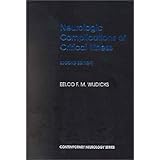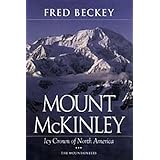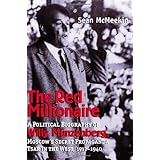
Average Reviews:

(More customer reviews)This book tells the story of the hyperinflation in Weimar Germany and its aftermath (1919-1926) and, to some extent, the ensuing rise of Hitler's Nazi Germany. It is a story which is so complex and convoluted that it takes a historian to even begin to do it justice. Fortunately, this book's author is not only an accomplished historian, well versed in his subject, but also a gifted writer. The result is a remarkable book about an almost indescribable and incomprehensible period in the world's history.
So, if you've ever wondered about the hyperinflation in Germany following the Great War (WWI), and by extension what the REAL consequences of inflation, hyperinflation, deflation and depression might be, this is the book you've been looking for. In fact, I've only read one other book which even comes close; that being `The Fiat Money Inflation in France: How It Came, What it Brought, and How It Ended' by Andrew Dickson White. But this book is much more timely, much broader in scope, much more comprehensive, and much easier to relate to our more modern times.
In it, you'll learn a lot and find the answers to many puzzling questions. Among them: what caused the inflation, what were its impacts, and why it was allowed to continue; which groups and social classes fared the best, which the worst, and why; how the inflation resulted in the redistribution of wealth; what happened to landlords, shop owners, government employees, members of unions, free workers, and pensioners, as well as the middle-class; what the man or woman on the street had to do simply to survive; who prospered, who lost everything, and why; what the government did and didn't do and what the impacts were on people at all social levels, and on industry; how the hyperinflation was finally ended, why the resulting deflation and depression was worse in many ways, and why; and what those living through the deflation/depression period had then to do in order to survive and, in some cases, prosper.
There is also much anecdotal evidence as to just how much misery both inflation and deflation can cause. For example: the well dressed elderly man who couldn't afford two cents (American money) for a bag of apples; the little old lady who supported herself by selling her crucifix chain one tiny gold link at a tme; the foreign students who bought rows of houses out of their allowance; the substitution of paste-board coffins for wooden ones; the life insurance policies that eventually were worth less than their annual premiums; the banks that did away with smaller savings accounts because the paper required to book them was worth more that the money in the accounts; the man who said it was better to have a prostitute in the house than the corpse of a dead baby; the beggars who, in October 1923, purportedly wouldn't accept anything smaller than a one million mark note; and finally, that even with the first "billiard" [a thousand million million] and five billiard notes being printed in November 1923, people still clamored for more.
Apart from the Weimar Republic: This book is essentially a case study in inflation and its aftermath which should be of interest to anyone contemplating or concerned about the current state of America's, and the world's economic future, and the direction America is headed. In reading it, it is well to keep in mind what Gunter Schmolders articulates (pg. 248), "With inflation alone can a government extinguish debt without repayment, or wage war and engage in other non-productive activities on a large scale: it is still not recognized as a tax by the tax-payer."
In any event, if you do read this book, and if you are anything like me: You'll likely conclude, as I did, that everyone talks about inflation, but no one, especially the politicians who cause it, really knows what they are dealing with or what the consequences may be.
Click Here to see more reviews about:
When Money Dies: The Nightmare of Deficit Spending, Devaluation, and Hyperinflation in Weimar GermanyWhen Money Dies is the classic history of what happens when a nation's currency depreciates beyond recovery. In 1923, with its currency effectively worthless (the exchange rate in December of that year was one dollar to 4,200,000,000,000 marks), the German republic was all but reduced to a barter economy. Expensive cigars, artworks, and jewels were routinely exchanged for staples such as bread; a cinema ticket could be bought for a lump of coal; and a bottle of paraffin for a silk shirt. People watched helplessly as their life savings disappeared and their loved ones starved. Germany's finances descended into chaos, with severe social unrest in its wake.
Money may no longer be physically printed and distributed in the voluminous quantities of 1923. However, "quantitative easing," that modern euphemism for surreptitious deficit financing in an electronic era, can no less become an assault on monetary discipline. Whatever the reason for a country's deficit—necessity or profligacy, unwillingness to tax or blindness to expenditure—it is beguiling to suppose that if the day of reckoning is postponed economic recovery will come in time to prevent higher unemployment or deeper recession. What if it does not? Germany in 1923 provides a vivid, compelling, sobering moral tale.

Click here for more information about When Money Dies: The Nightmare of Deficit Spending, Devaluation, and Hyperinflation in Weimar Germany






















